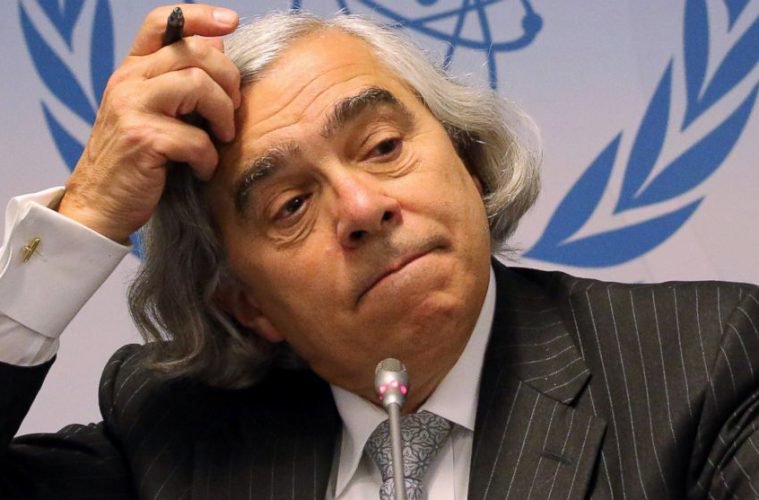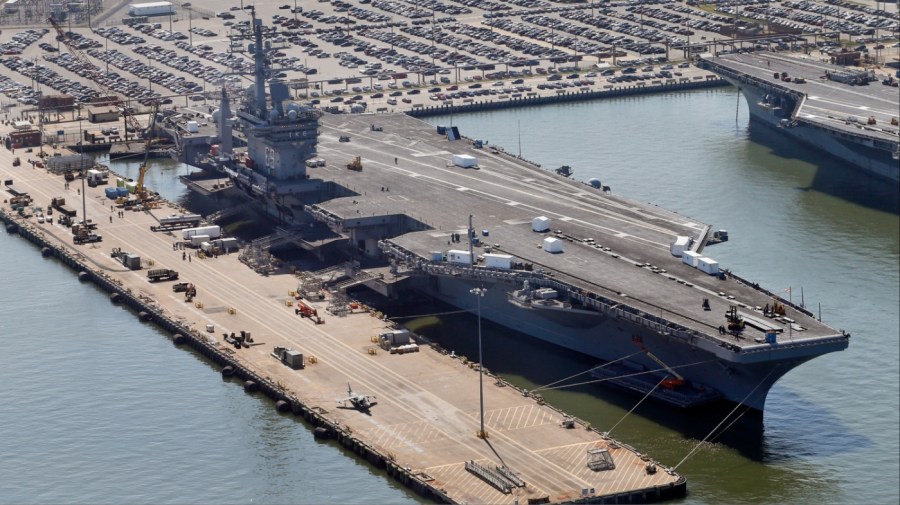
This week, Israeli schools will hold ceremonies in commemoration of Yitzhak Rabin, who was assassinated on November 4, 1995, for leading the peace process with the Palestinians. As in every such week – and every week in Israel’s history, for that matter – a partial and distorted perspective will be provided to the students, instead of a clear explanation of the historical facts and the critical thinking tools necessary to understand and draw conclusions from them. One of the facts kept from Israel’s children and youth is that Rabin was one of the key perpetrators of the ethnic cleansing policy from the 1948 war and throughout most of his military and political career.
Displacement is one the cruelest crimes perpetrated against individuals or groups. It is a crime that played a formative role in the histories of the Jewish people, of the State of Israel and of the Palestinian people. Uprooting and refugeehood, however, are more than past events – they are central to the lived reality of all Palestinians. Therefore, learning about the uprooting of Palestinians and the prevention of their return is essential also for Jewish Israelis interested in a deeper and more critical understanding of our reality.
Now that everyone’s talking about Rabin, let us explore the history of the displacement of Palestinians that is so interwoven in his personal biography. Instead of a celebration of militarist clichés, let us devote this day to recognition and compassion, accountability and redress.
The Palestinians as “a real bone in the state’s throat”
Expelling people from their homes and lands and preventing their return is an extremely cruel practice that violates the most fundamental human rights, and is therefore strictly forbidden by international law. Nevertheless, and despite a Jewish history replete with expulsions and exiles, expulsion has been an integral part of Israel’s history ever since it won its independence – and in fact long before. Yitzhak Rabin was active in ethnic cleansing operations throughout his adult life.
As early as in July 1948, as deputy commander of Operation Dani, he personally ordered that all inhabitants of Lydda “be expelled quickly without attention to age” and “be directed towards Beit Nabala [then under Jordanian control]”. Thousands of refugees, entire families, elderly people, women and children marched about 15 miles eastwards in the height of summer. Dozens, including infants, did not survive the journey.
The deportation of the inhabitants of Lydda and nearby Ramle was not exceptional during the 1948 war – it was part of its fundamental logic. In an interview held with historian Avi Shlaim in 1982, Rabin explained what historians have since then repeatedly clarified: the Zionist leadership took advantage of the war to expand the territory allotted to the Jewish State in the 1947 UN Partition Plan, occupying “those areas that were really within our soul”, including the Western Galilee, Jaffa, Lydda and Ramle – the latter being, according to Rabin, “a real bone in the state’s throat”.
In practice, the striving for a state with a significant Jewish majority led to an ethnic cleansing, by forced evacuation, coerced uprooting, and above all: the denial of the right of return. Much has been written about this, and primary historical sources are enough to understand the Zeitgeist (e.g., the Plan Dalet master plan; an intelligence report on “The Migration of Palestine’s Arabs” from December 1947 to June 1948; and official discussions about transfer and preventing return, quoted for example in Morris, 1986 and Masalha 1992).
True, even without being deliberately expelled, civilians tend to flee disasters and wars – they seek temporary shelter and intend to return home once the storm is over. However, one cannot explain away the fact that the territory that would become the State of Israel lost 85% of its Palestinian inhabitants, whose lands were grabbed and homes destroyed and return prevented in violation of international law to this very day, by muttering that “bad things happens in wars”. Nor does the responsibility of this side or the other for the outbreak of the war at all relevant to rationalizing these atrocities.
“I took advantage of the Kadesh Operation [the Suez Crisis] and in fact kicked out all the Arab inhabitants.”
Yitzhak Rabin
With regard to the expulsion of tens of thousands of civilians from the twin cities of Ramle and Lydda, Rabin himself wrote in his diary: “Psychologically, this was one of the most difficult actions we undertook. The population of Lod did not leave willingly. There was no way of avoiding the use of force and warning shots in order to make the inhabitants march the 10 to 15 miles to the point where they met up with the legion.” This psychological difficulty apparently did not prevent Rabin from continuing to supervise similar operations. In 1956, now chief of the northern command, he led the transfer of Palestinians inhabiting the demilitarized areas along the Syrian border. In that same interview with Shlaim, he said, “I took advantage of the Kadesh Operation [the Suez Crisis] and in fact kicked out all the Arab inhabitants… and moved them to the Syrian territory”. To prevent their return, the refugees had to sign forms where they declared they were leaving of their own will: “Of course there were threats, and they signed for us that they were moving voluntarily”.
In the 1967 war, now chief of staff, Rabin was responsible for systematic transfers in the Golan Heights, in the West Bank, and in the Gaza Strip. In some cases, civilians were forced on buses or forced marched towards Transjordan, as for example in the cases of the towns of Anata, Qalqilia, and Tulkarm, as well as the villages of Imwas, Yalu and Beit Nuba in the Latrun area, which were also demolished by the military after the expulsion. In these cases as well, the refugees were required to declare they were leaving of their own free will. Many who tried to return to their home in the immediate aftermath of the war were shot to death trying to cross the Jordan River. More than 300,000 people were forcibly displaced during the war under Rabin’s command, more than half of them 1948 refugees.
Rabin’s involvement in the ongoing Nakba did not end with his retirement from military service. In 1976, during his first government (the same government that renewed the massive land grabs for the stated purpose of “Judaizing the Galilee”, giving birth to the Palestinian Land Day), candidates for the office of mayor in several towns in the West Bank were deported out of obvious political motives. At that time, military intelligence chief Shlomo Gazit told in an interview: “We employed deportation against those who were involved, or tried to be involved, in political activity. We did not want to deal with political activists in Court. That would embarrass us. It was inconvenient for us, so we decided to get rid of them, and it proved itself. After a few deportations the level of political activity declined,” (Haaretz, January 17, 1992 quoted in a B’Tselem report).
During his term as Minister of Defense in the national unity governments (from September 1984 to March 1990), the Palestinian population was subjected to a heavier hand, and the deportation policy, almost completely suspended in the mid-1970 (during his first term as prime minister), was renewed. During the First Intifada, the Ministry of Defense under his leadership and the Ministry of Justice led by Dan Meridor were at odds with regard to Rabin’s demand to enable instant deportations within 72 hours after the military order had been issued. The opposition by the Ministry of Justice and the High Court of Justice to this whim did not last long.
During the Intifada, in December 1992, following the kidnapping and murder of police officer Nissim Toledano, Rabin ordered a massive deportation of more than 400 Palestinians to Lebanon. These were inhabitants of the West Bank and Gaza Strip considered by the defense establishment as “agitators, those inhabitants of the areas who in their activities endanger human life, or who agitate to such activities” – in other words, not individuals directly related to the kidnapping nor people who posed an immediate danger. In fact, contrary to its own procedure, the Shin Bet (Israel Security Agency) did not even have the time to prepare and present “intelligence materials to examine the administrative [i.e. non-judicial] evidence against those designated for expulsion”.
The expulsion order was carried out within hours after the government decision, without the expellees being told where they were headed. For more than 12 hours, as the order was discussed in the High Court of Justice, the prisoners were kept in buses, their eyes covered and their hands tied. This was clearly an act of vengeance, an illegal act of collective punishment. State Attorney Dorit Beinish also saw it that way: she refused to defend the state in court and even argued that the government’s conduct in this affair “suffered from every conceivable flaw”.
Room for everyone who feels that this is their homeland
Twenty-six years have passed since Rabin’s assassination. Rabin was assassinated because he was seen as having made “concessions” to the Palestinians. This was despite his resume, part of which was described here, and despite the fact that the Oslo Agreements he signed in 1993 with the PLO were far from representing a just peace process, but were more of a pragmatic move designed to perpetuate the unequal power relations between Israel and the Palestinians. As the years passed, even the discussion of the so-called “peace” with the Palestinians on Rabin’s anniversaries was replaced by an internal Israeli (Jewish) discussion of the need to maintain “the unity of the (Jewish) people”. Rabin dedicated much of his life to erasing the Palestinians from the land, and now the Israeli Ministry of Education is doing its utmost to erase them from the students’ consciousness as well.
One of the lesson plans on Rabin’s assassination suggested by the ministry is called “Room for Everyone – From Ideal to Reality”. It addresses the anniversary as “a time for reckoning and an opportunity for dialogue about the need to heal the wounds and mend the rifts torn in Israeli society… to make sure that the State of Israel, that transgenerational dream come true, would be able to allow and give room for everyone”. Everyone, but the Palestinians.
We really need to talk about “room for everyone” – room for everyone who feel this is their homeland, room for everyone who have been uprooted, born in exile, prevented from even visiting the land where their mothers and fathers used to live. As a Jewish-Israeli I say: It is our responsibility and right to correct this wrong and be the courageous generation that will lead the way to the return of the Palestinian refugees. This return is essential for reconciliation and shared living. It can take place without further harm, to Jews or others. It is the key, moreover, to a just and lasting peace. I choose to turn this day as well to a day of hope and redress.
This article was first published in Hebrew on Local Call and translated into English by Ami Asher.
Mondoweiss is a nonprofit news website dedicated to covering the full picture of the struggle for justice in Palestine. Funded almost entirely by our readers, our truth-telling journalism is an essential counterweight to the propaganda that passes for news in mainstream and legacy media.
Our news and analysis is available to everyone – which is why we need your support. Please contribute so that we can continue to raise the voices of those who advocate for the rights of Palestinians to live in dignity and peace.
Support Mondoweiss from as little as $1. Thank you.
Related posts:
Views: 0
 RSS Feed
RSS Feed

















 November 2nd, 2021
November 2nd, 2021  Awake Goy
Awake Goy 





 Posted in
Posted in  Tags:
Tags: 
















